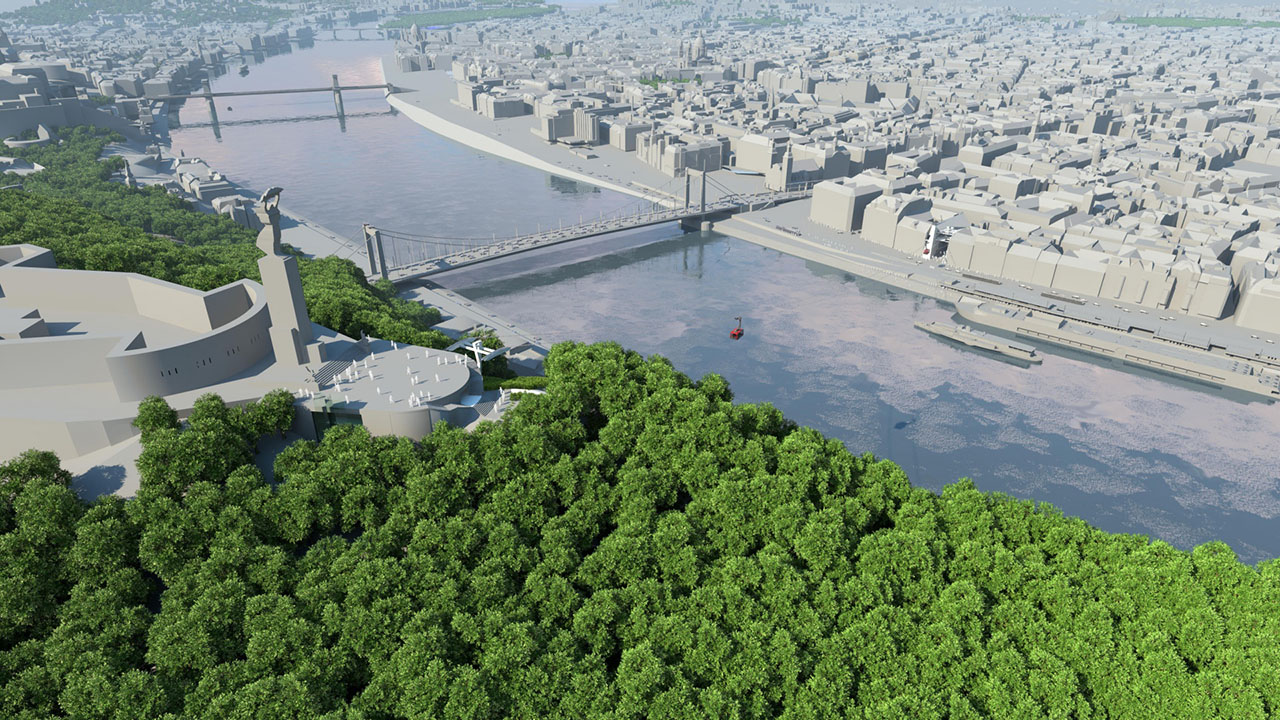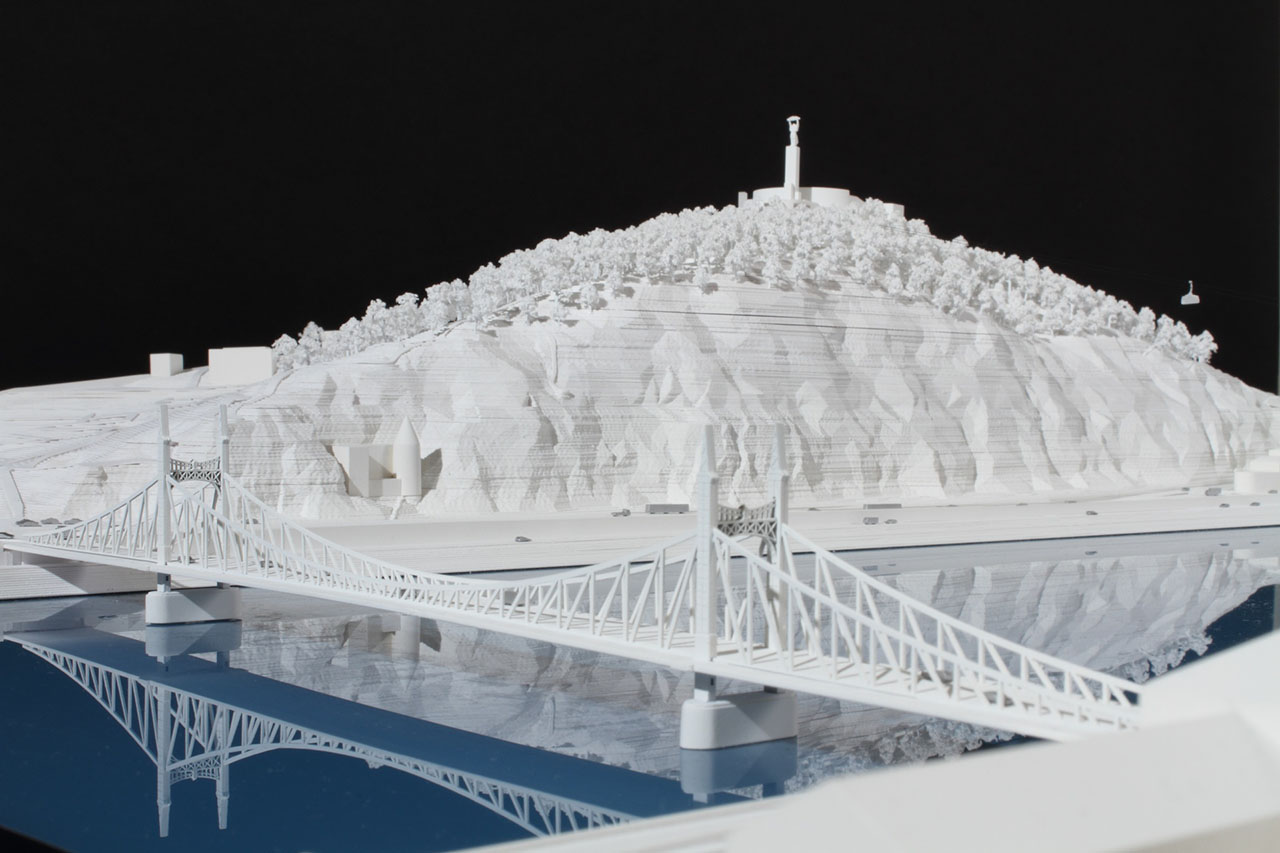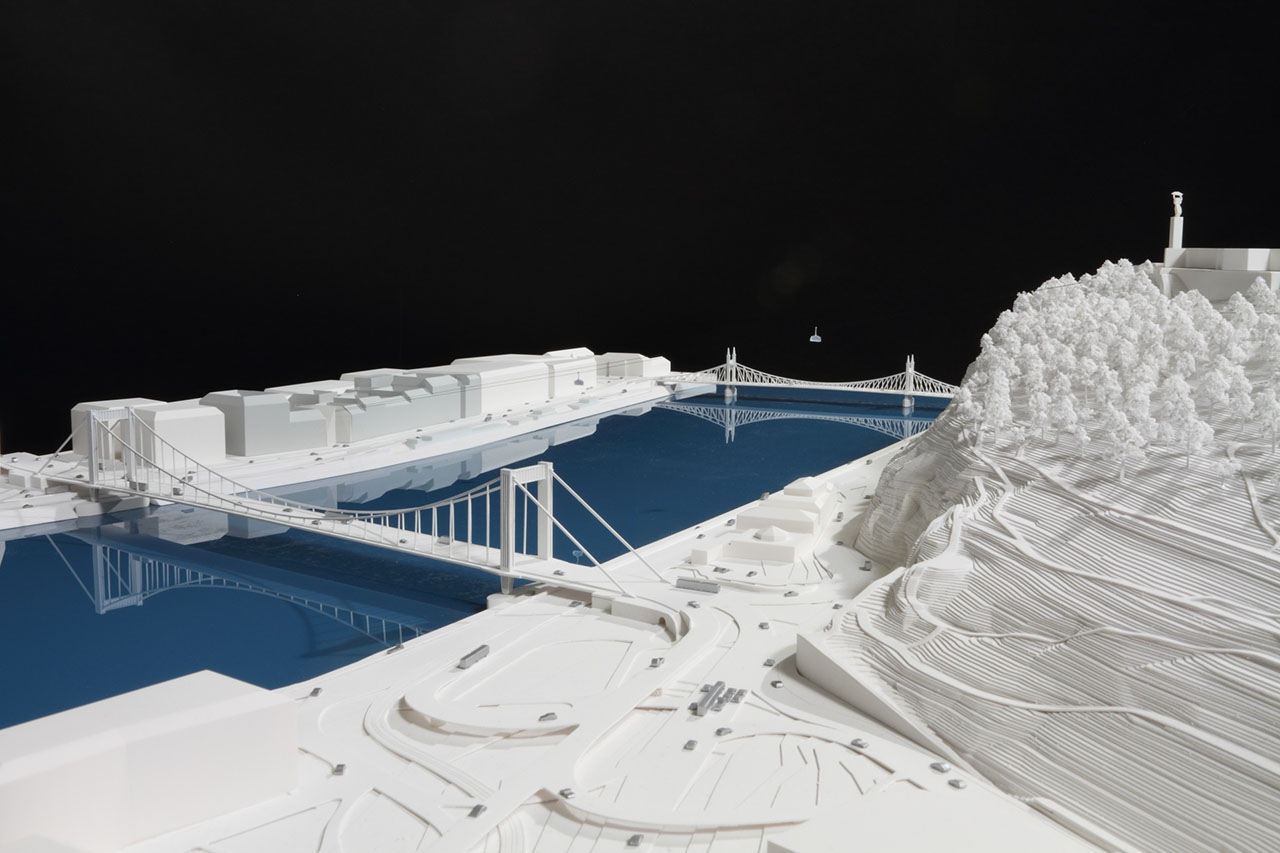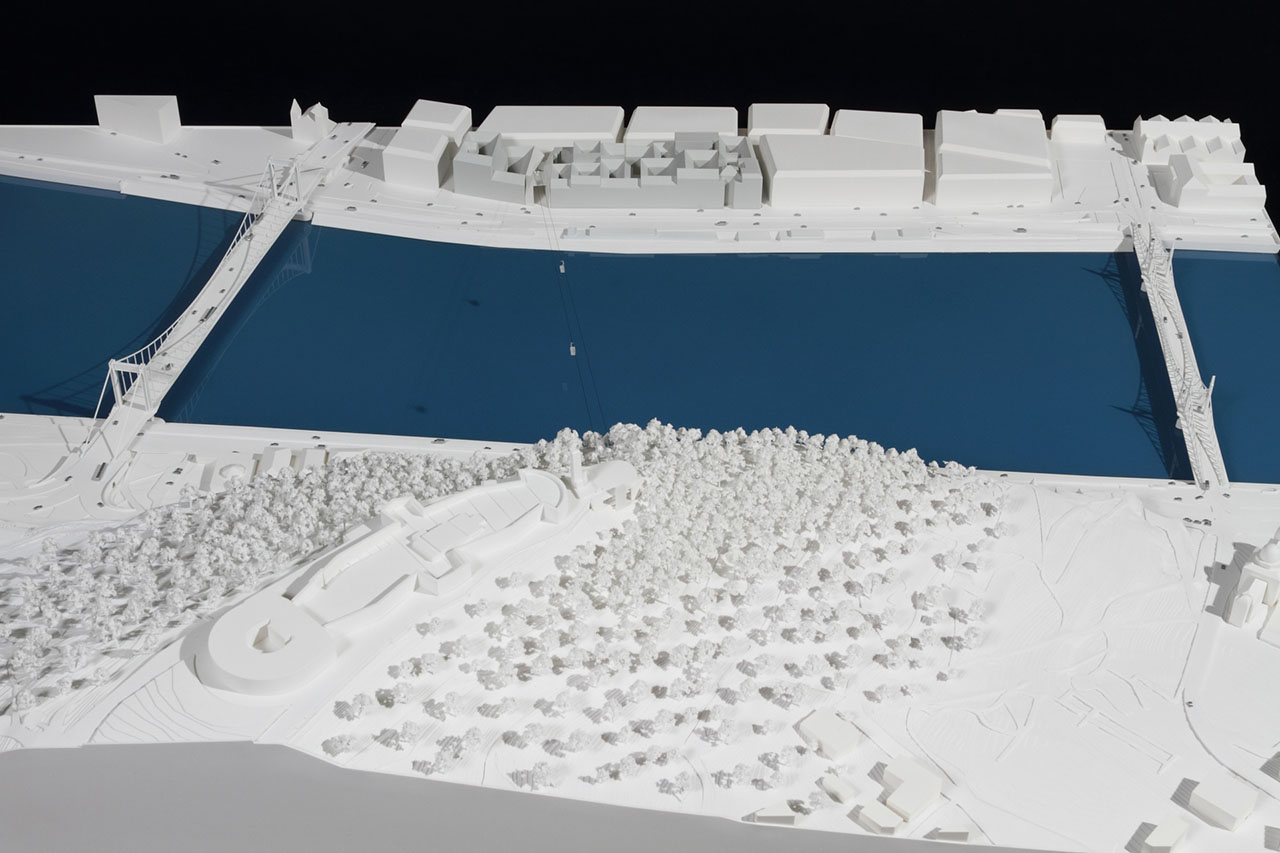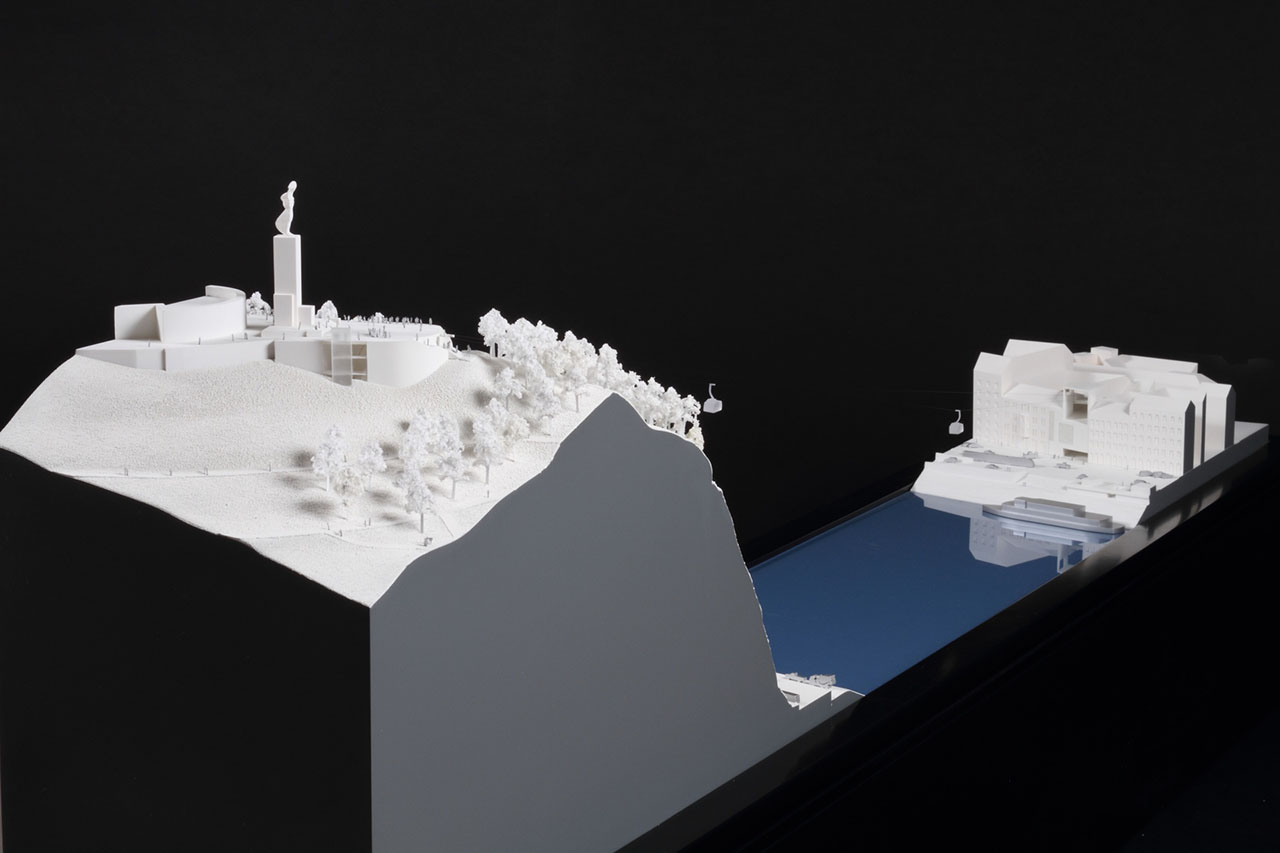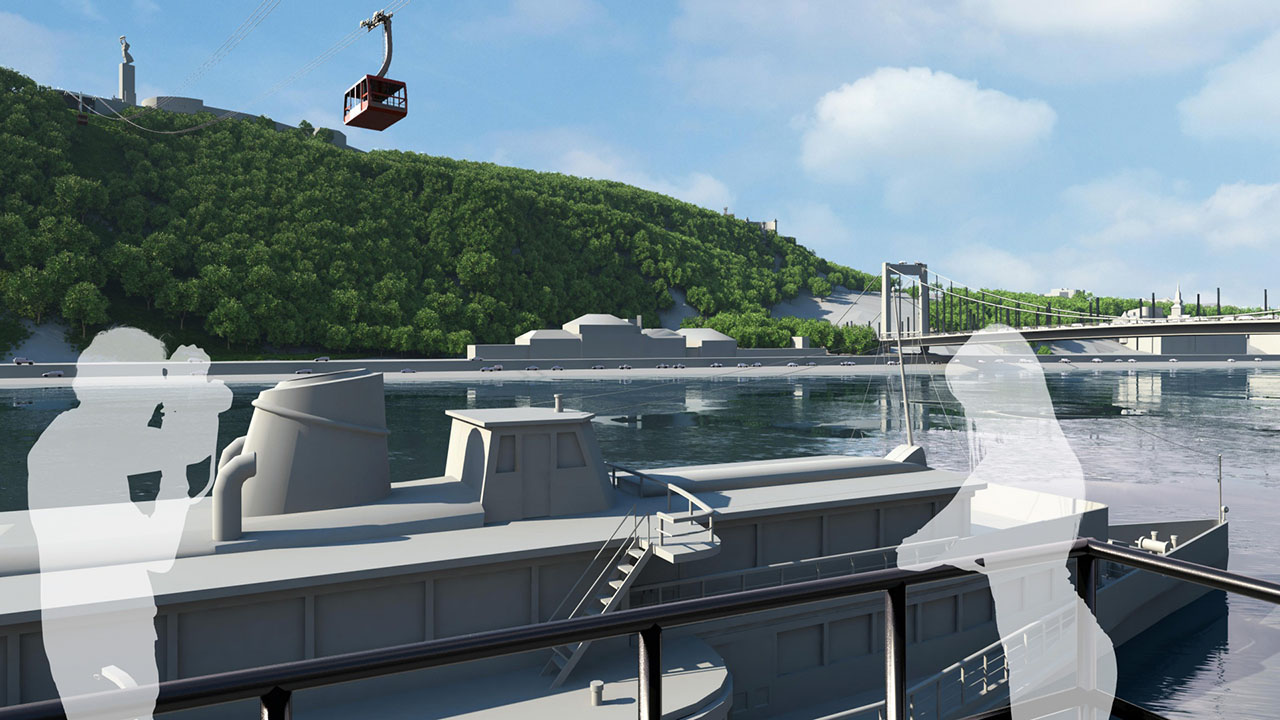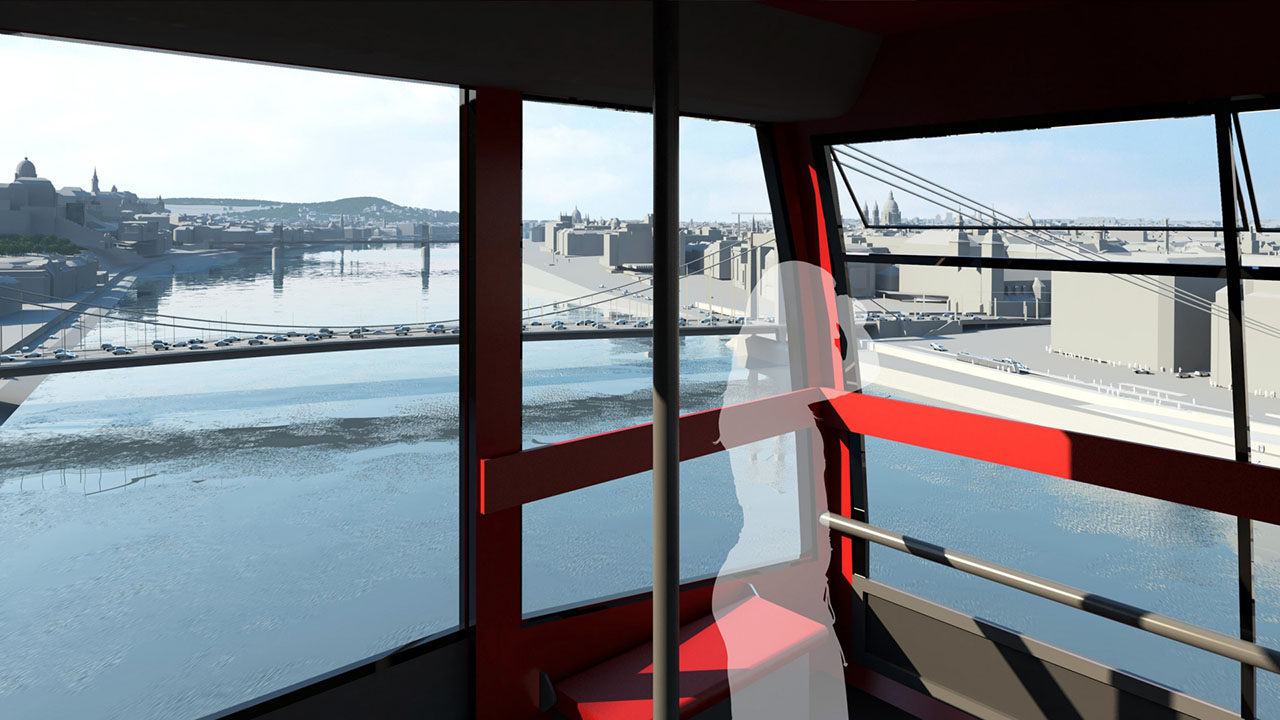It is worth looking from a high point at all cities that have special features, should that high point be a morphological uniqueness or a memorable engineering feat. The historical heart of Budapest is the Castle Hill which is connected to the Danube bank since 1870 by the remarkably built “Sikló” funicular railway whilst the highest point of the inner city – Gellért Hill offering the most impressive cityscape – is still difficult to access.
Though, since the first third of the 1800s, many plans were developed for utilizing the high point of Gellért Hill and for accessing it, but these were not realized. The legal conditions for sorting out the current undignified conditions were recently created by the government. Now it is possible to design an attractive touristic centre by conceptually rethinking the Citadel and its environment and also considering the environmental aspects.
The Pest-side quay facing Gellért Hill, that is the Belgrád Quay, despite its unique features, is hardly utilized for touristic purposes mainly because of the traffic led through the lower and upper quays. Plans are in progress for settling the area by extending the Pest esplanade. The objective is also to intensify the connection of the Inner City with the Danube by increasing the attraction of the streets running out and commercial utilization. In its plan, ZDA makes an attempt to make more attractive the high point of Budapest with the most spectacular view and the southern Inner City by creating a cable car. A feature like this could be a catalyser for developments in the area of the Belgrád Quay and the Citadel, and evidently offers advantages from the aspect of the emission of pollutants and noise. The new touristic element will attract visitors so that those starting from the Inner City will not have to get on a bus, so reducing the bus traffic between the Danube banks. The valley station may be created on the quay, by erecting an attractive structural shape, or hidden, on a vacant plot of Molnár Street. The hill station will not alter the protected silhouette of the Citadel either. The southern round terrace built together with the Liberty Statue will perfectly encompass the structural elements necessary for the operation of the cable car. Only a few steel ropes, and, at every 15 minutes, two cabins for 50 persons each will appear in the world heritage view of Budapest. During the planning process, coordination is needed with the UNESCO officials responsible for world heritage.
The presented concept is founded by several detailed special – architectural, urban-planning, touristic, traffic, environmental protection, green surface, cave protection, heritage protection and utilities – studies. The most important conclusion of each of these studies is that the conditions of realizing the project are provided from every aspect.

